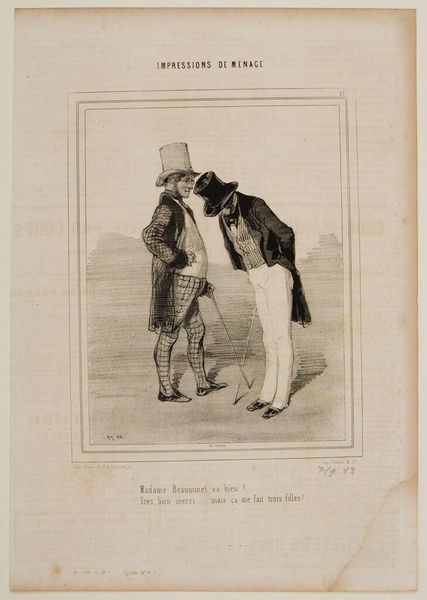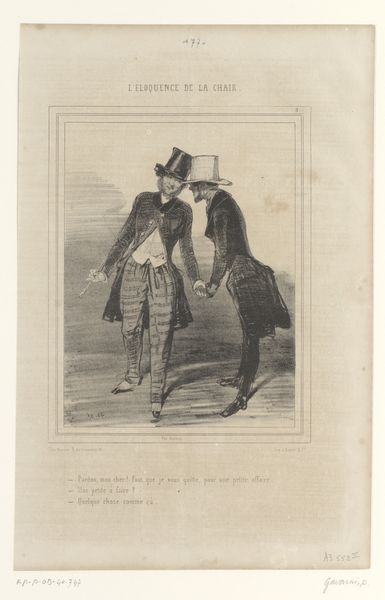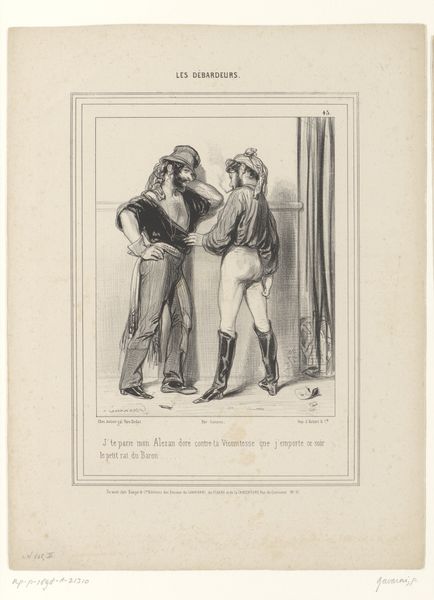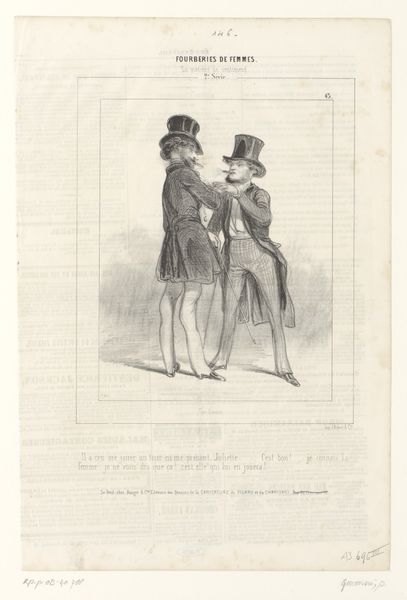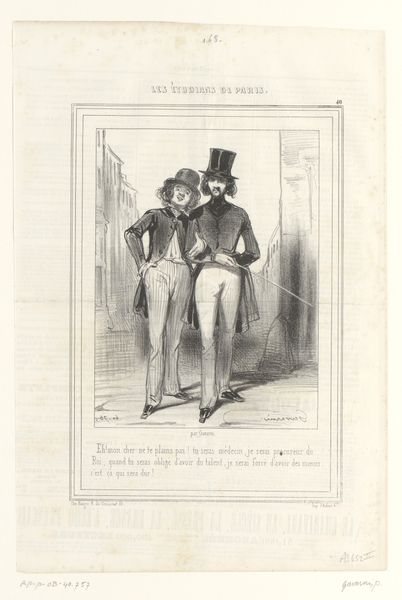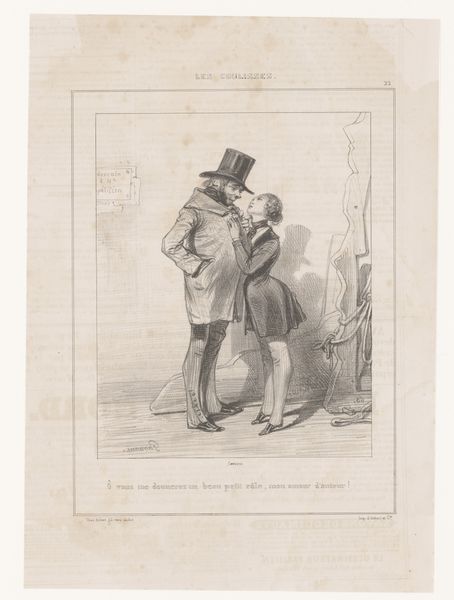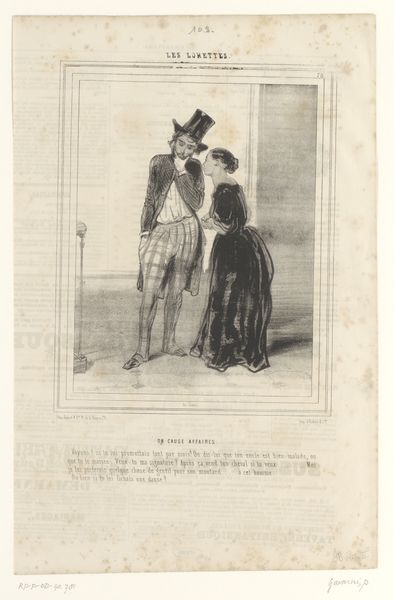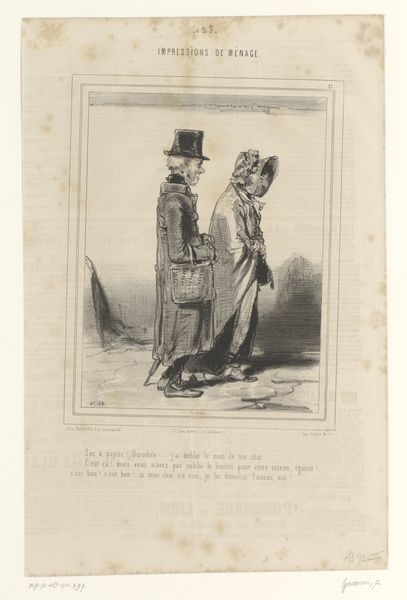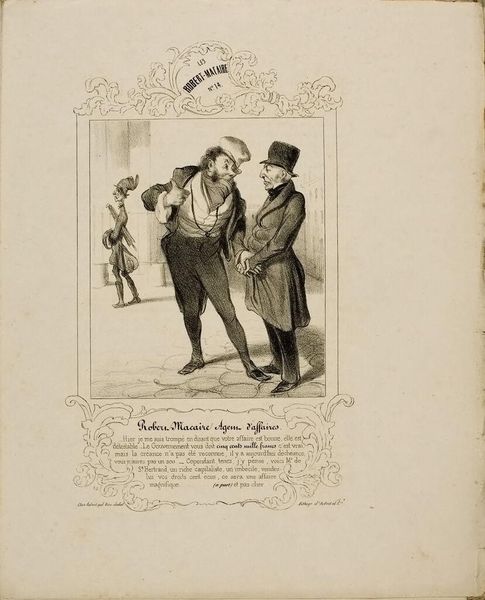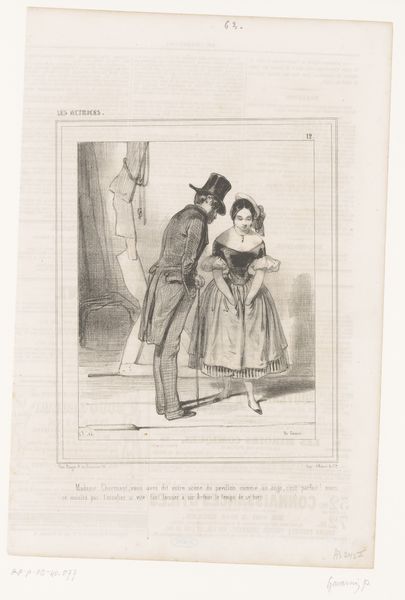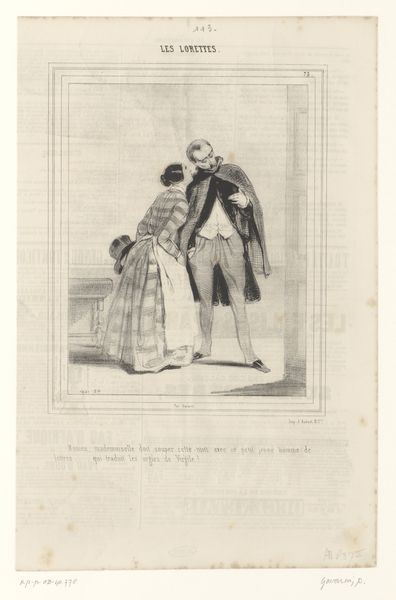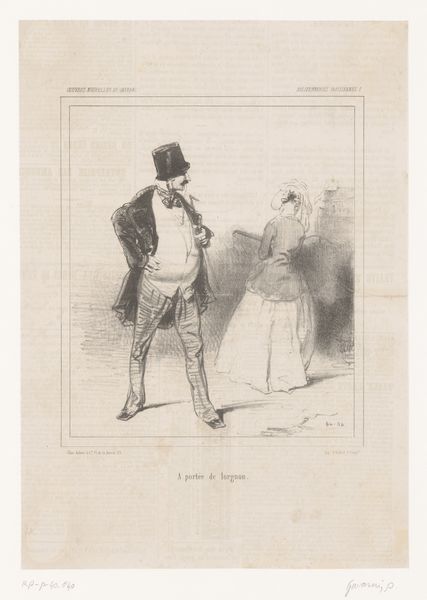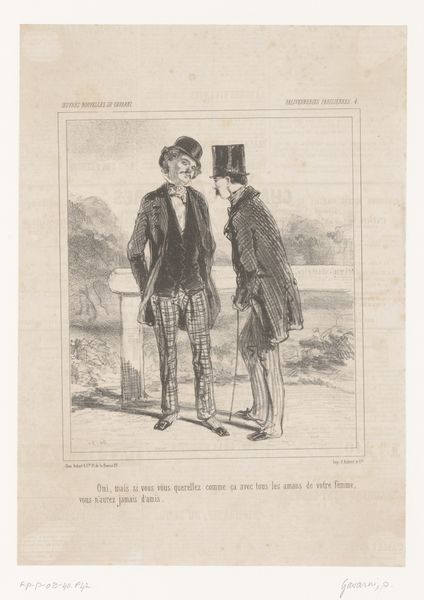
graphic-art, lithograph, print
#
graphic-art
#
lithograph
# print
#
caricature
#
romanticism
#
genre-painting
Dimensions: height 362 mm, width 237 mm
Copyright: Rijks Museum: Open Domain
Curator: What a wonderfully insightful print! We’re looking at "Man vraagt andere man naar het welzijn van zijn vrouw," a lithograph created around 1843 by Paul Gavarni. It’s currently held here at the Rijksmuseum. What strikes you about it? Editor: Initially? Oh, it's pure societal awkwardness rendered in exquisite line work. The body language tells the whole story, doesn't it? The dude on the right is all slumped over like he's carrying the weight of the world, while the other one is just, beaming, in his checkerboard suit. Curator: It's Gavarni's particular genius, to capture the anxieties of class and status in 19th century Paris. These prints, often featured in magazines, circulated amongst a burgeoning middle class keen to observe, and critique, aristocratic behavior. Editor: Critique is putting it mildly. That beaming character is basically oozing condescension. Like he’s so self-satisfied. The contrast between his posture and the slouching one? Comic gold, even now. I love the hat and walking stick... what statement do you think the artist wanted to express with such sartorial details? Curator: Well, clothing absolutely played a crucial role in the representation of class, aspiration, and often the mockery thereof. In Romanticism, as expressed by graphic art, such exaggerations of dress highlighted the societal theater unfolding at the time. Consider that the text "Impressions de Menage" (Impreesions of Men) features along the top border! Editor: Societal theatre indeed. It’s amazing how much drama and implied narrative he crams into a single frame. Just look at the downward slant of the bowed gentleman’s hat! It feels ripe with possible stories and explanations... almost tragic... though it's intended as a caricature? I can almost taste the satire. Curator: Precisely. It’s not merely humorous; it’s a form of social commentary, laying bare the hypocrisies and anxieties beneath the veneer of politeness and good manners, like he knew his society would collapse due to political, and ideological tension. Editor: Knowing the societal and historical elements is certainly insightful. What's fascinating to me, beyond Gavarni's statement, is that his figures seem so vibrantly alive. Each character is infused with recognizable attitudes. His skill just takes my breath away. I could write short stories about these characters! Curator: Absolutely, and I think that enduring appeal is a testament to the power of art to reveal fundamental truths about ourselves, regardless of historical context. Editor: Yes, that is so wonderfully put. It does beg to be engaged with! A brief encounter can reveal hidden aspects that echo, still, inside of us.
Comments
No comments
Be the first to comment and join the conversation on the ultimate creative platform.
